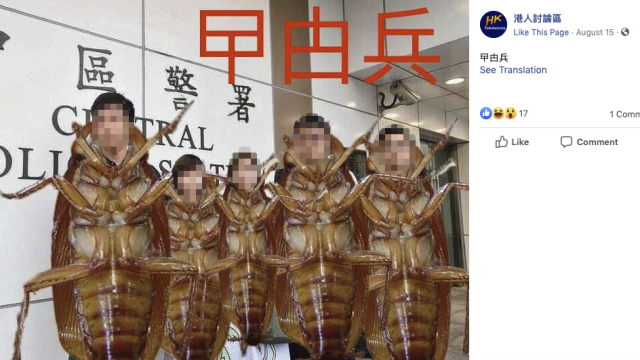Yes, Two Planets Can Both Share The Same Orbit
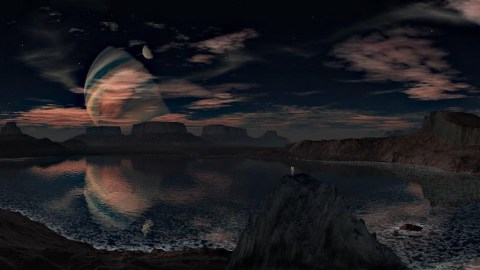
And one of our planets has the orbiting moons to prove it.
Despite the dangers posed to planet Earth by a comet or asteroid strike, our Solar System is actually an incredibly stable place. All eight of our planets are expected to remain in their orbits, stably, for as long as the Sun remains a normal, main sequence star. But this isn’t necessarily the case for all Solar Systems.
If two planets pass closely by one another in orbit, one can perturb the other, resulting in a massive orbital change. These two planets could collide, one of them could get ejected, or one could even get hurled into their central star. But there’s another possibility: these two planets could successfully share a single orbit together, remaining in orbit around their parent star indefinitely. It might seem counterintuitive, but our Solar System offers a clue to how this could occur.

According to the International Astronomical Union (IAU), there are three things an orbiting body needs to do in order to be a planet:
- It needs to be in hydrostatic equilibrium, or have enough gravity to pull it into a spheroidal shape. (In other words, a perfect sphere, plus whatever rotational and other effects distort it.)
- It needs to orbit the Sun and not any other body (e.g., it cannot orbit another planet).
- And it needs to clear its orbit of any planetesimals, proto-planets, or planetary competitors.
This last definition, strictly speaking, rules out two planets sharing the same orbit, since the orbit wouldn’t be cleared if there were two of them.
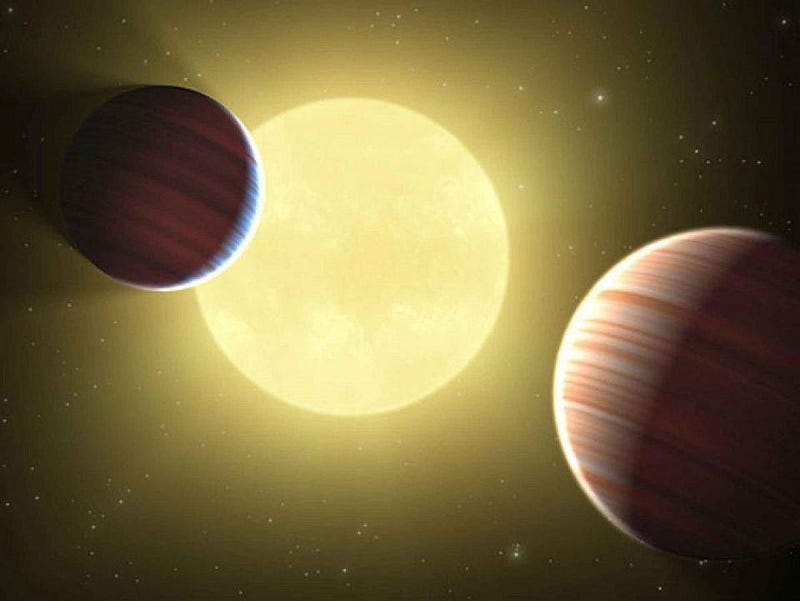
Fortunately, we’re not bound by the IAU’s questionable definition in considering co-orbiting planets. We can instead choose to worry about whether it would be possible to have two Earth-like planets that share the same orbit around their star. The big worry, of course, is gravitation.
Gravitation is capable of ruining a dual orbit in one of the two ways we imagined earlier:
- a gravitational interaction can “kick” one of the planets very hard, either sending it into the sun or out of the solar system,
- or the mutual gravitational attraction of the two planets can cause them to merge, resulting in a spectacular collision.
In simulations that we run to model the formations of solar systems from proto-planetary disks, both of these effects are seen extremely frequently.

This latter case is, in fact, something that may have happened to Earth when the Solar System was only a few tens of millions of years old! There was definitely a collision, some 4.5 billion years ago, that resulted in the formation of our modern Earth-Moon system. In addition, it very likely caused a major resurfacing event on our planet; even the oldest rocks we find on Earth are not as old as the oldest meteorites, likely of asteroidal origins, that we’ve discovered.
Two planets don’t do a great job of occupying the same exact orbit, however, because there’s no such thing as true stability in these cases. The best you can do is hope for a quasi-stable orbit. In this context, quasi-stable means that technically, on infinitely long timescales, everything is unstable, and these planets will play a game of Thunderdome: where at most one will remain.
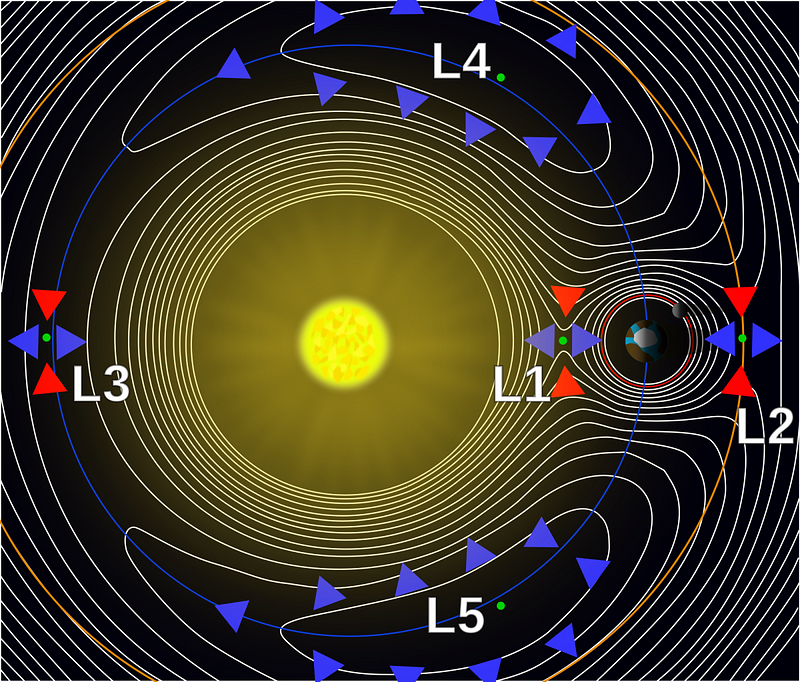
However, you can obtain configurations that will sustain themselves billions of years before one of those two “bad” events occurs. To understand how, you need to take a look at the above diagram, and in particular at the five labeled (in green) points: Lagrange points.
If you only considered two masses — the Sun and a single planet — there are five specific points where the gravitational effects of the Sun and the planet cancel out, and all three bodies move in a stable orbit forever. Unfortunately, only two of these Lagrange points, L4 and L5, are stable; anything that starts out at the other three (L1, L2, or L3) will unstably move away, winding up either colliding with the main planet or getting ejected.
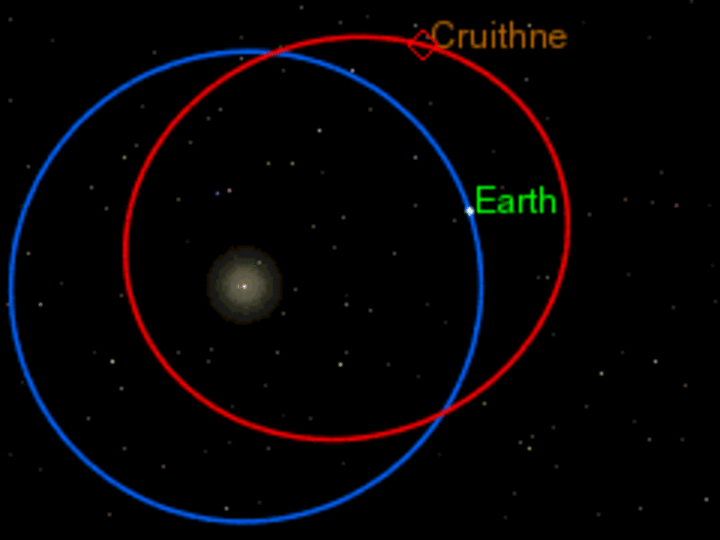
But L4 and L5 are the points around which asteroids collect. The gas giant worlds all have thousands, but even Earth has one: the asteroid 3753 Cruithne, which is presently in a quasi-stable orbit with our world!
Although this asteroid in particular isn’t stable on billion-year timescales, it is definitely possible for two planets to share an orbit just like this. It’s also possible to have a binary planet, which would be a lot like the Earth/Moon system (or the Pluto/Charon system), except with no clear “winner” as to who’s the planet and who’s the moon. If you had a system where two planets were comparable in mass/size, and only separated by a short distance, you could have what’s known as either a binary or double planet system. Recent studies indicate that this is legitimately possible.
But there’s one more way to do it, and this is something you might not have thought was stable: you can have two planets of comparable mass in two separate orbits, one interior to the other, where the orbits swap periodically as the inner world overtakes the outer world. You might think this is crazy, but our Solar System has an example where this happens: two of Saturn’s Moons, Epimetheus and Janus.
Every four years, whichever moon is interior (closer to Saturn) comes to overtake the exterior one, and their mutual gravitational pull causes the inner moon to move outward, while the outer moon moves inward, and they swap.

Over the past 25 years, we’ve observed these two moons dance quite a bit, with the configurations repeating themselves without perceptible changes over an eight year period. As far as we can tell, this configuration is not just stable on human timescales, but ought to be stable over the lifetime of our Solar System.
Resonances appear in many different ways in planetary dynamics, including the way that Neptune affects the distribution of Kuiper belt objects, the way that Jupiter’s moons Io, Europa, and Ganymede obey a simple 1:2:4 orbital pattern, and in how Mercury’s rotational speed and orbital motion obey a 3:2 resonance.

It’s no surprise that planetary orbits might also obey an orbit-swapping resonance, with Janus and Epimethius providing a spectacular example. You might object that these are moons around a planet, not planets around a star, but gravity is gravity, mass is mass, and orbits are orbits. The exact magnitude is the only difference, while the dynamics can be extremely similar.
Considering that we now know of exoplanetary systems that exist in great abundance around M-class, red dwarf stars, and that they appear analogous to either the Jovian or Saturnian systems, In other words, it’s totally conceivable that we’d have a planetary system somewhere in our galaxy with two planets (rather than moons) that do exactly this!

The unfortunate news, at least for now, is that out of the thousands of discovered planets around other stars, we don’t have any binary planet candidates yet. There was one candidate that was announced in the early days of the Kepler mission, but it was retracted, as one of the co-orbiting planetary candidates was discovered to actually have twice the period of the main planet. But absence of evidence is not evidence of absence. These co-orbiting planets may be rare, but with more and better data, we fully expect to find them.
Give us a better planet-finding telescope, a million stars with planets around them, and about 10 years of observing time. With facilities like those, we’d likely find examples of all three possible examples of planet-sharing orbits. The laws of gravity and our simulations tell us they ought to be there. The only step left is to find them.
Ethan Siegel is the author of Beyond the Galaxy and Treknology. You can pre-order his third book, currently in development: the Encyclopaedia Cosmologica.





